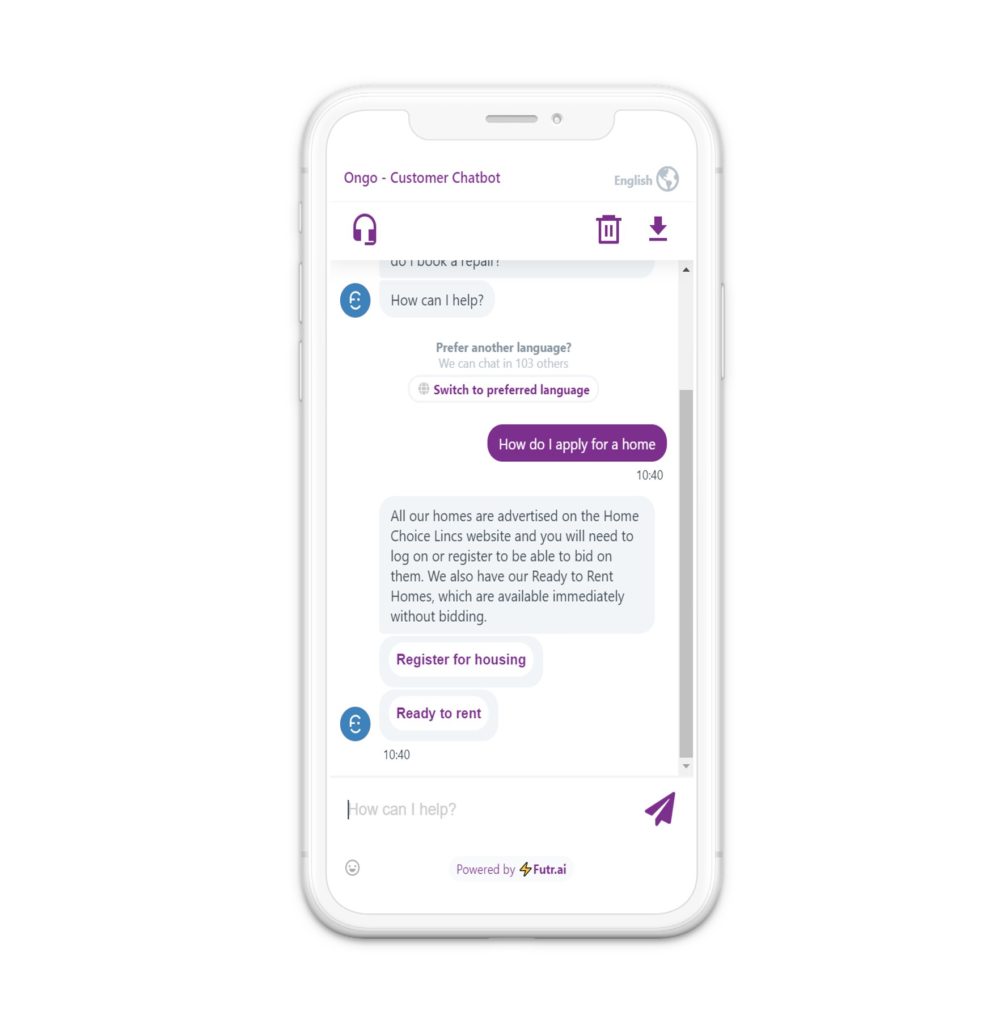 Kitty Hadaway, Housing Account Manager at Futr, looks at how automated customer contact is driving increased resident self-service.
Kitty Hadaway, Housing Account Manager at Futr, looks at how automated customer contact is driving increased resident self-service.
A full 12 months into the pandemic, it has become clear that many social landlords have seized the opportunity to advance their digital transformation and enhance resident self-service — particularly as a method of reporting and managing home repairs and maintenance.
It’s been fascinating to talk to people at the forefront of customer contact in social housing over the last year and discover how landlords are managing a crisis that is having such far-reaching effects on customers and staff.
The efficient reporting, scheduling and undertaking of home repairs and maintenance was something that all landlords needed to tackle early on in the crisis, as traditional working patterns and practices changed practically overnight.
For the safety and wellbeing of all staff and residents, access to customers’ homes — to assess or carry out a repair — had to be kept to an absolute minimum.
It also quickly became apparent that landlords needed to reassess how they would prioritise and deploy their valuable customer contact resources or risk further disruption to services in the face of unprecedented levels of inbound customer contact and delivering proactive support.
Accelerating innovation
Interestingly, I’ve learned that for the majority of landlords, the pandemic has pressed ‘fast forward’ on existing digital transformation and customer self-service strategies. This means that landlords haven’t necessarily needed to build new ways of working from the ground up.
An increasing number of landlords are now putting digital ambitions front and centre, and even setting targets to make some processes entirely digital. For example, social landlord Ongo has a ‘digital-first, with no one left behind’ strategy, while Grand Union Housing Group plans to move 80% of all resident interactions, including repairs, online.
Aspirations like these, when combined with increasingly web literate and tech-savvy customers, have meant that change has been easier to introduce, with new channels and methods of interaction helping to push on an open door.
Automating self-service
Promoting customer self-service for repairs and maintenance via customer portals is nothing new; with the best examples offering residents an end-to-end digital experience — from reporting through to repair and even gauging customer satisfaction.
But the pandemic has definitely hastened channel shift. For example, Grand Union is on course to go fully digital with a new repairs platform, while Peabody has trialled video calling so that residents can share the exact nature and nuances of a problem.
Most residents are also now responsible for the self-service of basic maintenance, undertaking simple jobs around the home, such as filling minor internal cracks and holes, managing mould and damp or unblocking basins and waste pipes. This self-reliance has understandably been more heavily promoted during the pandemic to limit the exposure of both residents and staff.
So, a big challenge has come in connecting customers to the right information whenever it is needed. An increasing number of landlords have now taken the next step by automating their online messaging, using automated customer contact or ‘chatbots’. Housing associations such as Ongo, believe housing and First Choice Homes Oldham, have recently adopted Futr’s AI-driven chatbots, with similar expectations and ambitions for the technology.
First Choice Homes Oldham had undertaken an analysis of its inbound customer enquiries before exploring automated customer contact. The data bore out that a high volume of repairs & maintenance questions were recurring and very straightforward to answer. For example: “Why isn’t my hot water working?” Or “I have a smashed window; how do I report it?”
In these instances, customer satisfaction is based less on the need for human interaction and far more on the availability of the right information, 24 hours a day. Intelligently automating this process benefits the customer, the landlord and the customer contact staff, who are then able to focus their attention on more complex enquiries.
What’s important is ensuring that automation fits with your individual customer strategy. Ongo, for example, bases its approach on a key level of measurability; can it maintain a level of intelligent decision-making that matches a human touchpoint? The key has been advancements in technology.
 AI chatbots
AI chatbots
A new generation of intelligent chatbots has now come of age. Once a question is submitted via the landlord’s channel of choice (either on their website or even via social media or WhatsApp), it’s then analysed using something called natural language processing.
This gives people the freedom to chat and interact with the system naturally, allowing customers to set the terms of the conversation (rather than a machine). Allowing this freedom of customer expression means residents can ask exactly what they want, in their own words and chosen language, rather than being forced to select from a limited number of predefined options.
The chatbot’s intelligent response is then determined by something called a ‘confidence score’. This uses intuitive artificial intelligence to measure content against an existing (and ever-expanding) library of data.
The chatbot’s response is then based on the level of that confidence score — a high confidence score and the answer to the question is given instantly. A lower level of confidence, and more options or qualifying questions are offered.
Fully automated
In most cases, success is measured by the number of automated customer contact interactions that are completed without the need for human intervention. Our landlord clients are currently achieving this result 80% or even 90% of the time. However, the option for human intervention always remains available for when enquiries are complex or can’t be resolved automatically.
Also, to help landlords improve their customer service, the system can automatically flag and gather trends in unanswered questions, giving landords’ the option to quickly intervene and add new information or options into the response system.
This has been particularly valuable during the pandemic, as messaging can quickly be updated to ensure landlords are responding with relevant guidance in an evolving crisis.
Increased value from self-service portals
The new generation of self-service tenant portals represent a significant financial and strategic investment for social landlords, so it’s not surprising that they are keen to maximise their accessibility and usage.
Automated customer contact is proving particularly attractive to landlords; not just because of its value to customers, but also because landlords can seamlessly increase the value and effectiveness of their existing resources.
Header image ©Production Perig/AdobeStock









